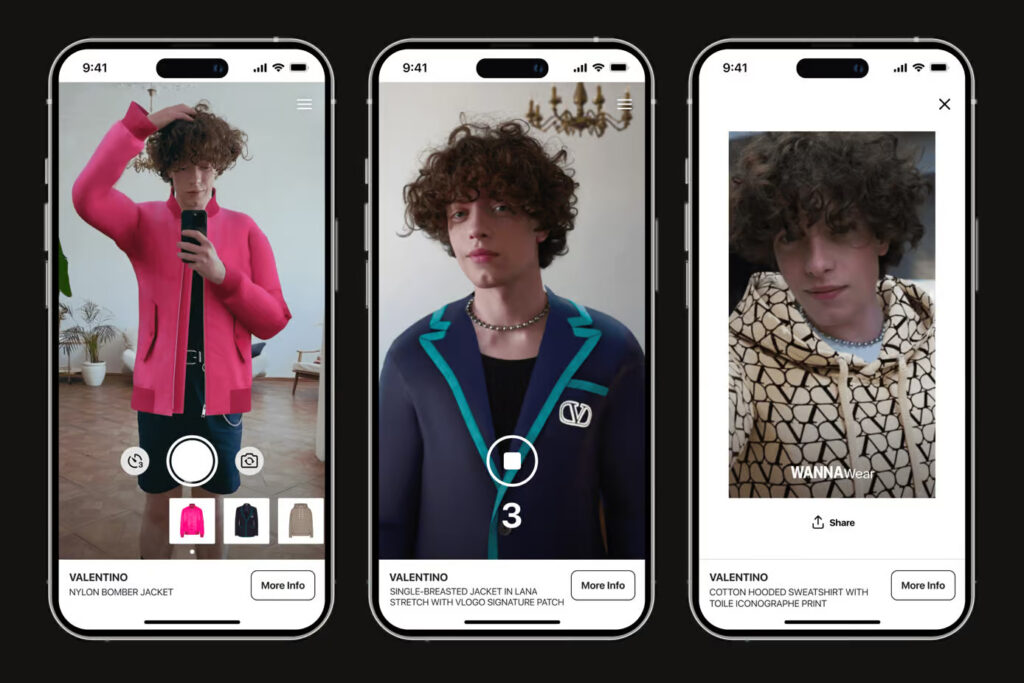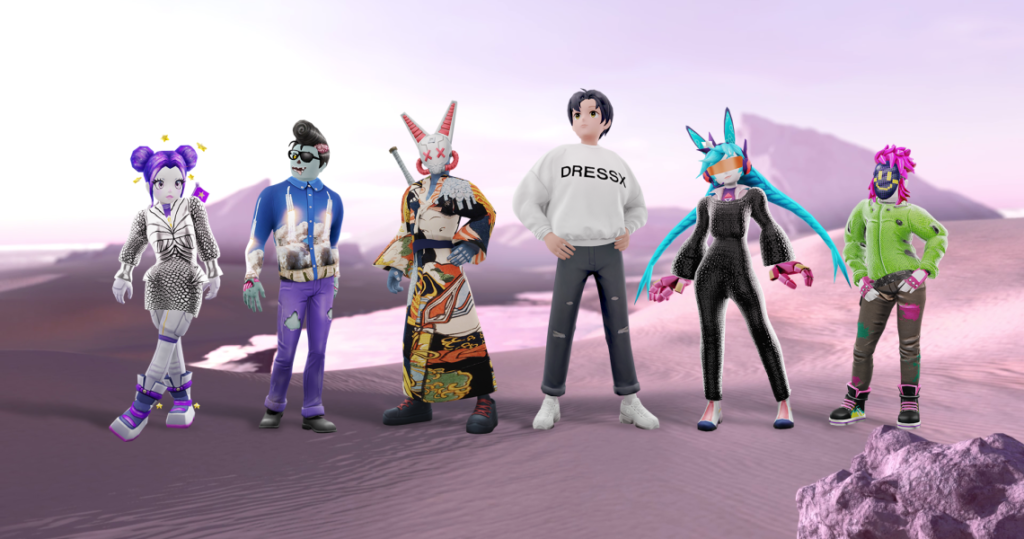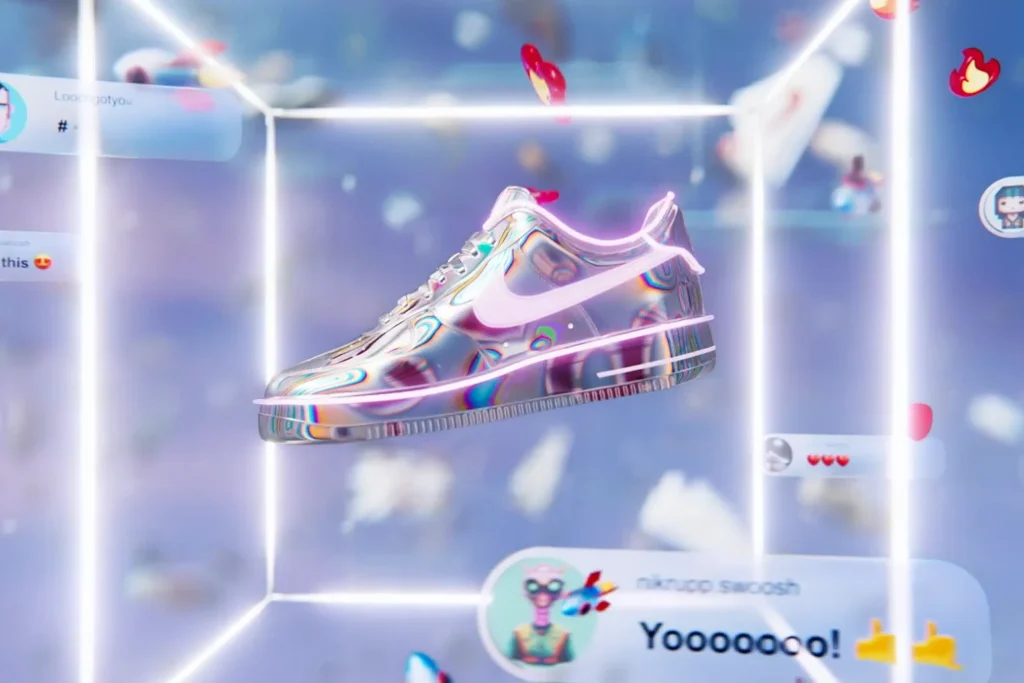Warning: Trying to access array offset on value of type null in /nas/content/live/hadean2022/wp-content/themes/blankslate/functions.php on line 373
The crash of the metaverse hype cycle in the last year has encouraged brands to get real about the value they can get from participating in virtual worlds beyond making headlines. As a consequence, we’ve seen a shift towards activations aimed at achieving meaningful incremental benefits rather than sweeping transformations.
Nevertheless, fashion brands still consider virtual experiences to be a primary opportunity for growing their equity amongst younger audiences and improving the performance of existing channels. The use cases for virtual worlds in fashion are therefore evolving step-by-step alongside the technology that underpins it.
We see these use cases evolving over four stages, each more innovative than the last:
Use Case 1: Enhancing e-commerce
Use Case 2: Digital fashion
Use Case 3: Community-building with virtual worlds and Web3
Use Case 4: Omnichannel ecosystems
Use Case 1: Enhancing e-commerce
E-commerce is a game changer for the fashion industry. It is the fastest-growing medium for fashion retail, accounting for 21% of sales globally, and has permanently changed how consumers discover, compare, and share fashion products.
However, there are significant pain points in the e-commerce experience for fashion which are yet to be overcome – in particular, the difficulty of knowing how a piece of clothing is going to look and feel before you can get your hands on it – resulting in an astronomical 24.4% return rate for fashion e-commerce in 2023, according to Coresight research.
Virtual try-ons have been developed as a means for helping consumers get a better feel for how a piece of clothing is going to fit them before they order it. Depending on their implementation, virtual try-ons enable consumers to do the following:
- Submit scans of their body to get a realistic 3D rendering of what clothes will look like when worn by them (e.g. BODS)
- Use camera feeds to overlay 3D objects onto images of themselves in the real world (e.g. Valentino, pictured below).
- Look at pieces of clothing in a variety of virtual scenes, adding all-important environmental context to help judge if a piece is just right.

By helping consumers make more informed decisions about the clothes they buy online, brands benefit from more efficient distribution pipelines and insight into customer demand, as well as a reduction in returns and carbon footprint.
In addition to virtual try-ons, brands are also using AI-powered virtual assistants to help consumers discover clothes that are right for them. For our own example of how this works, meet Ada, our virtual assistant for London Fashion Week 2023.
As well as acting as master of ceremonies at the THIS IS ICON charity gala, Ada was accessible through smartphones to give real-time fashion insights and additional information about the event.
In doing so, she was instrumental in creating closer connections between guests, designers, and the garments on show.
Use Case 2: Digital fashion
Virtual try-ons and virtual assistants are excellent functional upgrades to the e-commerce experience, but virtual fashion does not end there.
Mainstream adoption of virtual experiences for gaming and socialising amongst younger audiences has given fashion brands a whole new cultural dimension to play with. There are now around 3 billion video gamers worldwide, with every successive generation becoming more accustomed to engaging with virtual experiences on a regular basis; combined with 33% of Gen Z feeling that their digital identity is their most authentic self, virtual worlds are set to have a huge impact on the societies of the future.
Just like in real life, virtual communities are places where individuals want to stand out and express themselves. The avatars that players use to represent themselves in virtual experiences need to be dressed, and so there is always a pressing need for fashion.

To cater to this, fashion designers are making clothes specially for virtual experiences, and putting them for sale on a variety of platforms.
By sidestepping a large chunk of startup and manufacturing costs, virtual worlds offer a lower barrier to entry for new designers to break onto the scene and get consumers’ feedback on their designs. Young brands such as DRESSX have seen success entirely around designing and promoting virtual fashion, and some have also gone on to sell designs in the real world.
Established brands are getting in on the action, and leveraging their brand equity to make high-profile partnerships with the biggest virtual experience platforms in the space. For example, brands like Chanel, Balenciaga, Dior, and Nike have all produced skins for Epic Games’ Fortnite, which has 231 million monthly active users as of 2023.

Contributing digital fashion on these platforms not only generates new revenue streams but also plants seeds of brand awareness on a fertile ground of younger audiences. These see dividends in the real world as consumers gravitate towards brands that are familiar to them.
This is especially impactful if brands can associate themselves with great, memorable experiences in virtual worlds. And who better to create these experiences than the brands themselves?
Use Case 3: Community-building with virtual worlds and Web3
“Give consumers something to be part of, not only something to look at”
– Institute of Digital Fashion

Fashion brands’ engagement with virtual worlds should not be limited to the garments they provide.
In the digital era, fashion brands have achieved significant growth by producing high-value multimedia content that captures the attention of new audiences and converts them into customers.
Throughout this time, consumers have become accustomed to interacting with their favourite brands and each other through digital channels that allow for sustained engagement, discussion, and discovery.
Virtual worlds offer an opportunity to engage consumers with a unique combination of immersion, interactivity, co-creation, and social experiences that have long-lasting benefits for the brand.
“We are still largely replicating the IRL within the virtual realm. What worked IRL worked because it was adapted for IRL experiences. Now, it is up to us to create new experiences within a new medium.”
– Gala Marija Vrbanic for Tribute Brand
As platforms for building and sharing virtual experiences become more accessible to developers and users in the mainstream, they will become an integral part of the customer experiences of the future.
The onus is on brands to step up in the virtual sphere and evolve from garment providers to virtual experience designers. In doing so, they will be opening new ways to engage with communities and deepen relationships by offering consumers opportunities for self-expression, socialisation, and, most importantly, fun.
Web3
Alongside participating in virtual experiences, some innovative brands have looked to Web3 as a pivotal strategy for building engaged, high-value, digital-native communities.
Community is at the core of Web3 and its associated technologies. Through utility-based NFTs, brands can offer an equitable and engaging way of building micro-communities around specific product lines, sub-brands, and events.
NFTs are a verifiable and user-owned basis for community membership. Brands can use them to provide invested fans with access to unique items, content, rewards, and event passes. The tradeable nature of NFTs also encourages and rewards consumers to share brand messages with their networks and contribute to the growth of the community, thereby playing an active part in increasing the value of their investment.

Nike has been a leader in innovating around Web3 in the fashion world. Their latest Web3 campaign takes community members through a number of engagements before granting access to an exclusive physical shoe. Here, the blockchain acts as an independent means of tracking and verifying that the user has taken each of the steps required across several different channels.

Gucci’s collaboration with Yuga Labs gives community members a chance to purchase a limited edition pendant themed around ‘Kodas’, a character in Yuga Lab’s narrative universe and upcoming interactive content platform, Otherside. As well as a physical item, purchasing the ‘Kodapendant’ also grants special cosmetic accessories in the virtual world.

Louis Vuitton has brought its iconic trunk into Web3 as a limited-release NFT. Purchasing the digital trunk gives community members access to exclusive luxury products and events in both physical and virtual worlds.
Besides serving as a foundation for engaged and exclusive communities, Web3-based activations provide new forms of data on user engagement across channels, creating clearer insights into consumer demand for specific products and community initiatives.
This is an early indication of how brands are using novel technologies to build on their existing digital activities, and bridge them into each other to create sticky end-to-end customer experiences that culminate in real-world sales.
Use Case 4: Omnichannel ecosystems
Alongside the successful transition that fashion brands have made into digital media and e-commerce, physical spaces remain important places for brands to create face-to-face connections, showcase designs, and make sales.
The final objective is to take the virtual experiences described in the previous three steps, unify them into a single source of truth for insights and activations, and fold them creatively back into locations and events in the physical world.
AI and spatial computing technology are enabling brands to achieve just that, powering unprecedentedly immersive, adaptable, and personalised digital customer journeys that bridge with the physical world.
This is being used to develop 360 omnichannel ecosystems that achieve the following:
- Integrating e-commerce into virtual experiences and vice versa.
- Blending physical and virtual customer experiences, at home and in-store.
- Unifying data from various channels to gain holistic insights into the end-to-end customer journey.
- Leveraging that data to optimise the performance of customer activations, as well as create efficiencies in product design and supply chain planning.

If you want to learn more about how spatial computing and AI can form the backbone for immersive omnichannel customer experiences for fashion, we suggest you head to hadean.com/fashion and read our eBook, ‘Hadean Presents: Fashion’s Immersive Era’.
In the meantime, make sure to subscribe to the newsletter to stay up to date with all our insights!
